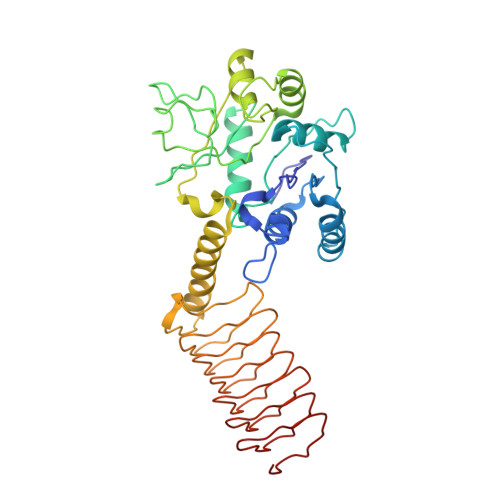Structure and function of GlmU from Mycobacterium tuberculosis.
Zhang, Z., Bulloch, E.M., Bunker, R.D., Baker, E.N., Squire, C.J.(2009) Acta Crystallogr D Biol Crystallogr 65: 275-283
- PubMed: 19237750
- DOI: https://doi.org/10.1107/S0907444909001036
- Primary Citation of Related Structures:
2QKX, 3D8V, 3D98 - PubMed Abstract:
Antibiotic resistance is a major issue in the treatment of infectious diseases such as tuberculosis. Existing antibiotics target only a few cellular pathways and there is an urgent need for antibiotics that have novel molecular mechanisms. The glmU gene is essential in Mycobacterium tuberculosis, being required for optimal bacterial growth, and has been selected as a possible drug target for structural and functional investigation. GlmU is a bifunctional acetyltransferase/uridyltransferase that catalyses the formation of UDP-GlcNAc from GlcN-1-P. UDP-GlcNAc is a substrate for two important biosynthetic pathways: lipopolysaccharide and peptidoglycan synthesis. The crystal structure of M. tuberculosis GlmU has been determined in an unliganded form and in complex with GlcNAc-1-P or UDP-GlcNAc. The structures reveal the residues that are responsible for substrate binding. Enzyme activities were characterized by (1)H NMR and suggest that the presence of acetyl-coenzyme A has an inhibitory effect on uridyltransferase activity.
Organizational Affiliation:
School of Biological Sciences and Maurice Wilkins Centre for Molecular Biodiscovery, University of Auckland, New Zealand.















